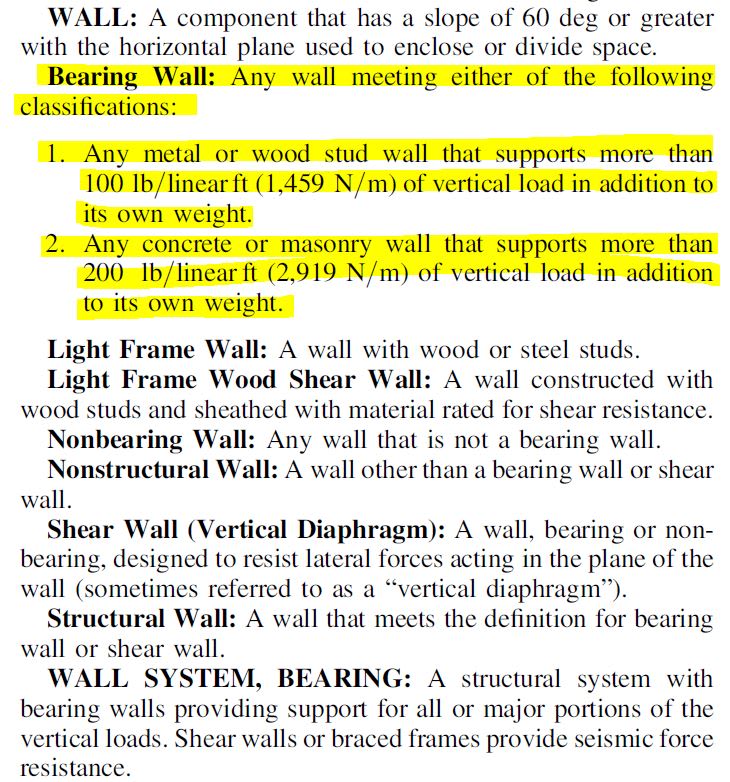WeezerMike1
Structural
We have a project with a pre-engineered metal building. The exterior walls are pre-fab panels supported on horizontal cold formed Z-girts. Under seismic loads, those girts span horizontally to primary building columns, and then those columns span vertically between the foundation and the roof.
We have a disagreement as to whether the provisions of ASCE 7 section 12.11 (structural wall anchorage) should apply. Structural walls are defined by ASCE 7 as walls that are either shear walls, or bearing walls (supporting more than 100 PLF in addition to their own self weight). My position is that the panels and horizontal girts are clearly non-structural wall components. But as soon as the load path engaged primary building columns to resist out-of-plane seismic loading, those columns and the rest of the load path should be considered a structural wall with anchorage requirements per ASCE 7 section 12.11.
Am I nuts?
Mike
We have a disagreement as to whether the provisions of ASCE 7 section 12.11 (structural wall anchorage) should apply. Structural walls are defined by ASCE 7 as walls that are either shear walls, or bearing walls (supporting more than 100 PLF in addition to their own self weight). My position is that the panels and horizontal girts are clearly non-structural wall components. But as soon as the load path engaged primary building columns to resist out-of-plane seismic loading, those columns and the rest of the load path should be considered a structural wall with anchorage requirements per ASCE 7 section 12.11.
Am I nuts?
Mike

